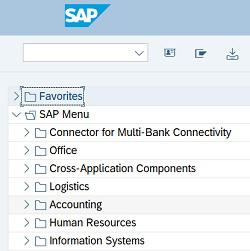What is SAP HANA? A Quick Overview
by Ragavendiran Kulothungan Shakila
 SAP HANA is different from its architecture – it is an in-memory, column-oriented, relational database management system. It stores all data in-memory (RAM) and in a compressed columnar format. It is so fast; hence it does not require sums, indexes, materialized views, or aggregates. This reduces the database footprint.
SAP HANA is different from its architecture – it is an in-memory, column-oriented, relational database management system. It stores all data in-memory (RAM) and in a compressed columnar format. It is so fast; hence it does not require sums, indexes, materialized views, or aggregates. This reduces the database footprint.
Everything is calculated on-demand and in main memory. This makes it possible for companies to run online transaction processing (OLTP) and analytics applications (OLAP) on the same instance at the same time.
What Is In-Memory Technology?
Improved hardware and software innovations paved the way for in-memory business applications.
Hardware Innovations
- Multi-Core Architecture
- Massive Parallel scaling
- A dramatic decline in price/performance
Software Innovations
- Row and Column Store
- Compression
- Partitioning
- No aggregate tables
- Insert only on delta
SAP HANA stores a considerable amount of information compressed in the main memory. It uses parallel processing on multiple cores and moves data-intensive calculations from the applications layer into the database layer for even faster processing.
Since all data is available in the main memory and processed without interruption, there is no need for aggregated information and views. This further simplifies the architecture, reduces latency and cost.
How Does SAP HANA Differ From Other Databases?
SAP HANA is different from other traditional databases in terms of architecture, how data is stored and accessed, data processing, column store, and by technology itself. It addresses many bottlenecks caused by other databases such as input/output data transfers from disks to servers, disk-centric approach, and slow batch processes.
So, to address these bottlenecks SAP came up with a futuristic in-memory database known as HANA, High-Performance Analytic Appliance. The main database storage now is the RAM instead of the disks. This ensures SAP HANA can multitudes fast compared to traditional RDBMS even the data on the old-style RDBMS would fit completely in the buffer cache.
It is different from traditional databases, not only in terms of technology but also in its offerings to customers. SAP ensures HANA is readily available to the customer in on-premise, cloud, or hybrid. It also gives leverage by adding multiple tenants in one database instance. With one database instance, we could create as many tenant databases. So, it’s possible for the customers to connect different applications to different tenants with one database instance. In simple words, with one installation many tenant databases can be created.
SAP HANA is not only used as a database but also to develop native applications, data modeling, perform analytical calculations, text search, streaming analytics, graph data processing much faster than before and includes extract, transform, load (ETL) capabilities as well as an application server.
It has many inbuild services such as name server, index server, daemon, compile server, web dispatcher, script server, xsengine and dpserver. These services ensure the database performs its operations in no time and processes all the end-user requests in a quick time with high reliability as well.
SAP HANA also has machine learning and artificial intelligence capabilities which made it even more distinct from other traditional databases. With advanced AI capabilities, HANA uses the least recently used algorithm to decide where to keep data in the database either in memory or in disk.
Row Store vs Column Store
SAP HANA supports both row store and column store for saving data in the database, but it is optimized for the column store. Each of these stores shows significant differences with regard to the main memory management.
On starting the database, the row store is always loaded entirely, only those columns of essential column tables are loaded into memory. The other columns are loaded, only if requested. Data is inserted in HANA database in row store and read from column store for fast access and stored as compressed data in a column store.
SAP HANA Dynamic Tearing
SAP HANA uses dynamic tearing, a native big data solution for HANA. It places hot data in SAP HANA in-memory tables, and warm data in extended tables, the highest value data remains in-memory, and cooler less-valuable data is saved in the extended store.
It is helpful for handling a large volume of data. It makes HANA more efficient for handling large volume data by placing hot data, most recently used in memory and the cold in disk-based extended storage. This can reduce the size of in-memory database.
Deployment Options
SAP HANA database supports many deployment options. This includes SAP HANA database in appliance, Tailored Datacentre Integration (TDI), SAP HANA Cloud Platform Database Services (Neo), SAP HANA on private cloud such as Google Cloud, Azure, AWS and Alibaba Cloud, SAP HANA Enterprise Cloud (HEC) and SAP HANA enterprise edition targeted for developers and optimized to run on resource-constrained environments.
It also offers the option of scale-out and scale-up. In Scale-out, it is not possible to increase the resources in the server but can add additional server (multi-host) with the required resources. In Scale-up, it is possible to increase resources in the same server and offers better flexibility. The best example of scale out is HANA Appliance which can be purchased from SAP-certified vendors and for scale-up its TDI based approach, where HANA is deployed in the customer’s own datacentre or on any private cloud.
SAP HANA – A Futuristic Innovation
In this modern era of digitalization, SAP has completely revolutionized the way we use its ERP application either ECC on HANA or S/4HANA by simplifying their data structures to reside mostly in column store and minimizing the row store usage.
SAP HANA is not only considered as a database to store data from different sources but also as an application by itself. With the introduction of S/4HANA, SAP has drastically changed the business processes. Now with SAP S/4HANA, its not just ERP but an intelligent ERP with Artificial Intelligence inbuilt along with Fiori UI to transform the business processes.
This achievement wouldn’t be possible without SAP HANA as a database for S/4HANA. The introduction of DRAM in HANA made even faster start times for less downtime, increased memory capacity per CPU while reducing TCO. SAP HANA decides itself which data to place in persistence memory and what remains in DRAM (Dynamic random-access memory).
SAP HANA knows which data structures benefit most from persistent memory. It decides automatically placing these data structures on persistent memory (RAM), while all others remain in DRAM. The Intel Optane Memory serves this purpose. Although the DRAM technology is not that actively used now but it is the future of HANA infrastructure.
by Ragavendiran Kulothungan Shakila
More Blogs by Ragavendiran Kulothungan Shakila

5 SAP Applications That Use Machine Learning...
Machine Learning (ML) is a technology-focused on Artificial Intelligen...

What is the SAP Cloud Platform?
The SAP Cloud Platform (SCP) is the next-generation platform to create...

What is SAP Financial Accounting (SAP FI)?
SAP Financial Accounting (SAP FI) - An Overview SAP FI (SAP Financi...
Related Blogs

What is the SAP Fiori Launchpad?
The SAP Fiori launchpad (FLP) is the access point or homepage for...

7 Tips to Make Your SAP Data Ready for AI
A crucial factor behind AI functioning well is Data. A 2019 report mentioned...
.png)


